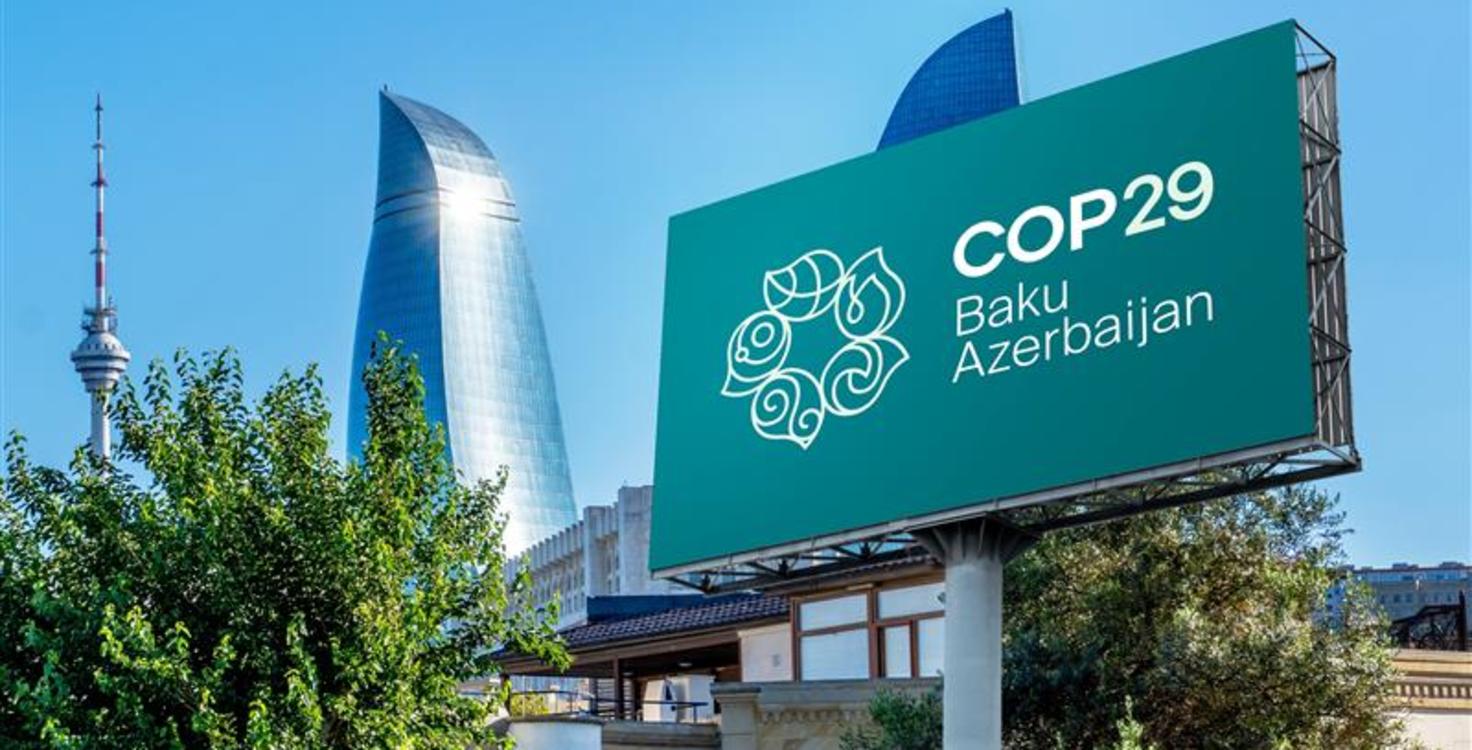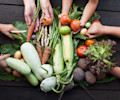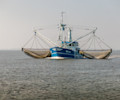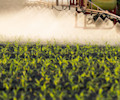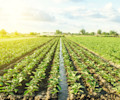Last week, many of the world’s most influential policymakers, politicians and leaders descended on Baku, Azerbaijan for the 29th Annual Conference of the Parties (COP29) of the UN Framework Convention on Climate Change.
While not without controversy – ranging from the host’s pro-fossil fuel stance to a lack of ambition in the formal negotiations – the UN summit presented a vital opportunity to tackle climate change.
With the impact of intensive animal agriculture often underrepresented in climate change engagement efforts, despite its critical role in the global net-zero transition, the FAIRR Initiative was on the ground to follow and drive key discussions on creating a sustainable food system.
This Insight piece highlights some of the outcomes from the summit, ranging from methane reduction commitments to new initiatives on food and agriculture, as well as outlining where more work is needed ahead of COP30.
Food Day and COP announcements
Overall, progress on policy initiatives and national commitments for the agri-food industry were mixed. The Baku Harmoniya Climate Initiative for Farmers, which aims to support collaboration between existing initiatives on food and agriculture, was announced on Food, Agriculture and Water Day, held on 19 November.
The Agriculture Innovation Mechanism (AIM) for Scale initiative also unveiled a US$1 billion package to support weather forecasting for low-income farmers. The initiative was first announced last year at COP28 as part of a partnership between the United Arab Emirates and the Gates Foundation.
One year on from the UAE Declaration on Sustainable Agriculture, Resilient Food Systems and Climate Action, progress has been slow on the commitment to better integrate agri-food emissions into nationally determined contributions (NDCs) and other national plans.
The UK has strengthened the climate target within its NDC – it will now aim to cut greenhouse gas emissions by at least 81% by 2035, up from the 68% reduction target it had previously set for 2030, though it is not yet clear what the ambition will be on agricultural emissions. Brazil has increased its emission reduction target from 59% to 67%, while also announcing several measures to continue combatting deforestation.
Countries are expected to update their NDCs early next year in time for COP30. However, it remains to be seen how many will begin to effectively integrate food systems considerations in the months ahead, and whether these NDCs will include progress on repurposing agricultural support to align with climate and nature goals, as called for by investors with US$7 trillion in assets.
Finance COP: The Baku Finance Goal
Baku was dubbed the “Finance COP” because all eyes were on the finance negotiations, which needed countries to establish a new collective quantified goal. Despite the often difficult negotiations, which ended over the weekend, the Baku Finance Goal sets a new global target to channel US$1.3 trillion of climate finance to developing countries by 2035 from “all sources”, including private and public capital.
The deal includes a new core target of US$300 billion per year, with developed countries taking the lead, a significant uplift from the previous US$100 billion goal. However, as commentators have noted, this figure is smaller than existing subsidies towards fossil fuels, which are not covered in the agreement, and there is widespread recognition from developing nations that the sums are insufficient to address climate action and its impacts.
It is not yet clear what impact the election of President-Elect Donald Trump will have on global climate finance commitments, though there are concerns that the incoming US president will withdraw from the Paris Agreement, limiting the country’s ambition for future action.
It is also unclear how much finance agri-food systems will receive. Although Qu Dongyu, Director-General of the UN Food and Agriculture Organization (FAO) noted that food systems require around US$1 trillion annually until 2030 to reach net-zero targets, agriculture received a tiny fraction (4.3%) of total global climate finance in 2019/20.
However, there are positive signs that this topic is gaining more attention, with the World Bank recently committing to doubling agri-food finance.
Global and regional FAO Roadmap reports
Following several delays over the past year, at COP29 the FAO again delayed the release of its global roadmap report. In 2022, FAIRR investor members called for the development of clear a roadmap for achieving food security and nature goals by 2050 without breaching the 1.5°C threshold, backed by Ban Ki Moon, Mary Robinson, Christiana Figueres, and the Net-Zero Asset Owners Alliance.
The FAO committed to develop a global roadmap and released a Roadmap In-Brief last December at COP28, with the promise that a fuller version would be forthcoming. The In-Brief document focused on climate change and food security but unfortunately did not give nature an equal place with these two goals. This was one of several serious concerns FAIRR had, as detailed in this Insight piece.
To be fit for purpose, and to align with the original proposals highlighted in FAIRR’s investor-backed letter, a global roadmap needs to:
integrate a One Health approach;
fully incorporate global nature goals, including those from the Glasgow Leaders' Declaration on Forests and Land Use; and
provide clarity on the role that protein diversification plays in addressing climate change, biodiversity loss and hunger.
Based on the strength of commitment the FAO Director-General Qu Dongyu showed towards taking a holistic approach to food systems transformation, there is hope that the global FAO roadmap report, when released, will hold “solutions for the climate crisis and the interlinked challenges of food, water, land and biodiversity.”
Ambition from non-state actors
Despite mixed ambition in the formal negotiations, it was positive to see continued progress from non-state actors. Organisations representing 1.2 billion farmers, 2.2 billion residents and combined agri-food revenue of US$1 trillion have backed the Food Systems Call to Action since it launched last year. FAIRR’s convening and engagement work has also been highlighted by this initiative.
Action on methane emissions
Methane emissions received some attention, with the COP Presidency hosting the COP29 Summit on Methane and Non-CO2 Gases on 12 November alongside the US and China to discuss super-pollutants that are more potent than CO2.
At the event, Fatih Birol, Executive Director of the International Energy Agency, called on parties to the Paris Agreement to deliver NDC targets covering all greenhouse gases, while more than 30 countries backed a new declaration committing to set methane waste reduction targets in future NDCs.
Action on deforestation: Looking ahead to Brazil and COP30
On deforestation, 15 countries making up the Forest & Climate Leaders’ Partnership launched a political statement calling for greater private sector investment to support “high integrity” carbon credit markets.
New data released by Brazil shows that the country’s rate of deforestation has fallen, however, the world is still off track from meeting its target of halting deforestation by 2030, according to the Forest Declaration Assessment.
Deforestation featured heavily in conference conversations and, as the primary driver of deforestation and nature loss, food systems will likely attract growing attention in the run-up to Brazil hosting COP30 in Belem, near the Amazon rainforest, next year.
With the Baku summit highlighting the growing need for finance to address climate action, it is crucial that investors and policymakers alike work to keep the Paris goals alive. FAIRR will continue to convene conversations with all key stakeholders to do so, driving ambitious action on food and agriculture.
FAIRR insights are written by FAIRR team members and occasionally co-authored with guest contributors. The authors write in their individual capacity and do not necessarily represent the FAIRR view.
